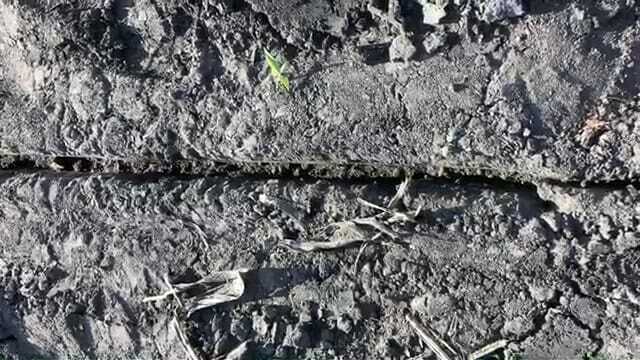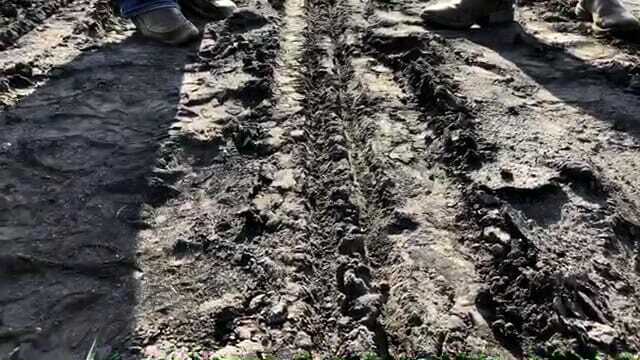Many farmers are pushing the envelope to get their crop in the ground this season. With moisture continuing to be a real issue, we run into problems with sidewall compaction. We have three examples below of scenarios that can lead to sidewall compaction issues later on: open trench, rubber closing wheels and spiked closing wheels.
Sidewall compaction can result from V-openers “smearing” through wet soil. Gauge wheels or planter lift wheels will then compound the problem. When the soil dries it becomes too hard for roots to penetrate through and develop the root system.
If you see an open trench, the key takeaway is to decrease your unit down pressure and increase closing wheel down pressure. During a seed’s crucial growth stage, it transitions from growing seedling roots into developing its nodal root system. This tends to be around V2 and V3 and is when you can see implications of sidewall compaction. When the seedling shuts down those seedling roots the nodal root system starts to grow horizontally along the trench searching for water. You may start to see nutrient deficiency symptoms, yellowing corn, stunted growth or floppy corn.
The University of Kentucky released a study showing a 50 percent yield reduction when corn is planted in a completely open trench. We recommend avoiding sidewall compaction by either staying out of the field until conditions are suitable, staggering your closing wheels or investing in the spiked closing wheels. The spiked wheels leave a zippered pattern in the soil that breaks down the sidewalls to ensure seed to soil contact.
Sidewall compaction is not something you can see from your planter, so we encourage you to jump out and look at what’s happening with your seed to soil contact. Dig few plants and wash off the roots to determine how growth is proceeding. Knowing this information early on will be important for late season windy and wet weather, and for evaluating stalk quality when harvest approaches later in the season.



